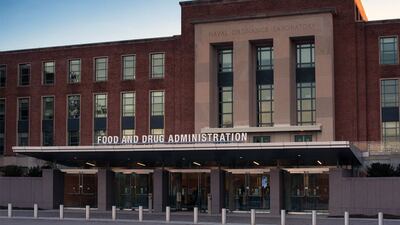User Fees
The agency’s plan for advanced manufacturing seeks more harmonization, while also seeking to codify internal practices with guidance and training.
Pink Sheet infographic shows that while overall growth continues at the drugs and biologics centers, the US FDA still must add many employees to meet user fee-mandated hiring goals.
A lack of process documentation was part of the reason the FDA forgot to account for fee refunds in its estimates of incoming applications for two fiscal years, a mistake that likely cost the agency millions in revenue.
As it has every year since FSMA was passed in 2011, FDA doesn’t plan to impose reinspection fees until it publishes guidance for small businesses to request reductions. FY2025 budget proposal includes plan “to re-structure the fee programs to make it more administratively feasible to operate.”
Pink Sheet reporter and editors discuss the US FDA drug approval decisions that could arrive in August, a trial design issue that could ensnare BMS’ Opdivo along with AstraZeneca’s Imfinzi, and the EMA potentially asking all sponsors to provide raw clinical data as part of application reviews.
The agency used a 10-year average with updated figures to calculate the FY 2025 PDUFA application fee and limit the impact of submission volatility, but still allowed GDUFA and BsUFA fees to skyrocket.
A stacked user fee goal lineup sets the stage for market showdowns in primary biliary cholangitis and IgA nephropathy, the first psychedelic approval decision, and lots of targeted cancer therapies.
Agency used a 10-year average with updated figures to calculate FY2025 PDUFA application fee and limit impact of submission volatility, but still allowed GDUFA and BsUFA fees to skyrocket.
US FDA user fees will go up by almost 12% for fiscal 2025, with PMAs set to cost $540,783 and 510(k)s at $24,335.
The agency used a 10-year average with updated figures to calculate the FY 2025 PDUFA application fee and limit the impact of submission volatility, but still allowed GDUFA and BsUFA fees to skyrocket.
But the agency should explain why different meeting types are granted than requested or denied entirely, industry representatives said during session on meeting management best practices.
The document explains how user fees for combination products are assessed and administered, as well as waiver possibilities.
FDA reminds companies which registered with agency solely to manufacture OTC sanitizers during COVID-19 public health emergency they will be subject to FY2025 OTC monograph user fees if they don’t delist and deregister as monograph drug manufacturers by 12 a.m. on 31 December.
US federal agencies are entering a new era of uncertainty and increased litigation over their regulatory interpretations, but the FDA may benefit from the unique circumstances that have evolved through user fee legislation.
US FDA review divisions will determine whether the meeting is appropriate because there are no one-size-fits-all requirements.
Old habits die hard when it comes to funding the FDA. When the agency is doing things well, it doesn’t get the money it needs to keep up the momentum.
A Pfizer exec says that the old prescription drug user fee formulas that usually increase funding and staffing for many FDA programs no longer deliver the same return on investment.
Old habits die hard when it comes to funding the FDA. When the agency is doing things well, it doesn’t get the money it needs to keep up the momentum.
With likely more fee-paying applications arriving at the agency, sponsors may be wondering whether user fees should have been increased as much as they were at the start of FY 2024.
FDA officials have said hiring could be slowed if an inflationary pay increase is not included in the agency budget, but CDER and CBER continue to add staff at a steady pace.
ADVERTISEMENT



















